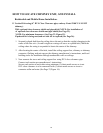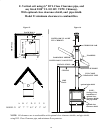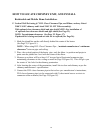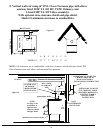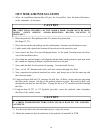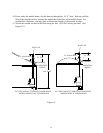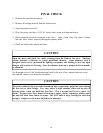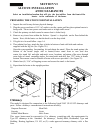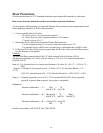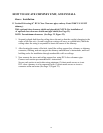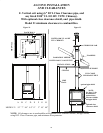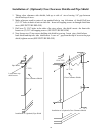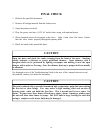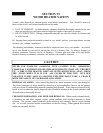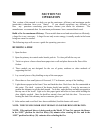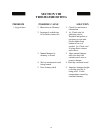
Floor Protection:
Floor protection must be 3/8” minimum thickness non-combustible material or equivalent.
How to use alternate materials and how to calculate equivalent thickness.
An easy means of determining if a proposed alternate floor protector meets requirements listed
in the appliance manual is to follow this procedure:
1. Convert specification to R-value:
R-value is given—no conversion is needed.
K– factor is given with a required thickness (T) in inches:
C-factor is given: R=1/C
2. Determine the R-value of the proposed alternate floor protector.
Use the formula in step (1) to convert values not expressed as “R”
For multiple layers, add R-values of each layer to determine the overall R-value.
3. If the overall R-value of the system is grater than the R-value of the specified floor protec-
tor, the alternate is acceptable.
Example:
The specified floor protector should be 3/4” thick material with a K-factor of 0.84.
The proposed alternate is 4” brick with a C-factor of 1.25 over 1/8” mineral board with a
K-factor of 0.29.
Step (a): Use formula above to convert specification to R-value. R= 1/K x T = 1/0.84 x .75 =
0.893
Step (b): Calculate R of proposed system. 4” brick of C=1.25, therefore Rbrick = 1/C =
1/1.25
=0.80 1/8” mineral board of K = 0.29, therefore Rmin.bd. =1/029 x0.125 = 0.431
Step (c): Compare proposed system R of 1.231 to specified R of 0.893. Since proposed
system R is greater than required , the system is acceptable.
Definitions:
Thermal conductance = C = Btu = W
(hr)(ft²)(°F) (m²)(°K)
Thermal conductance = K = (Btu)(inch) = W = (Btu)
(hr)(ft²)(°f) (m)(°K) (hr)(tf)(°F)
Thermal conductance = R = (ft²)(hr)(°F) = (m²)(°K)
Btu W
Install in accordance with 24 CFR, Part 3280 (HUD).
30



